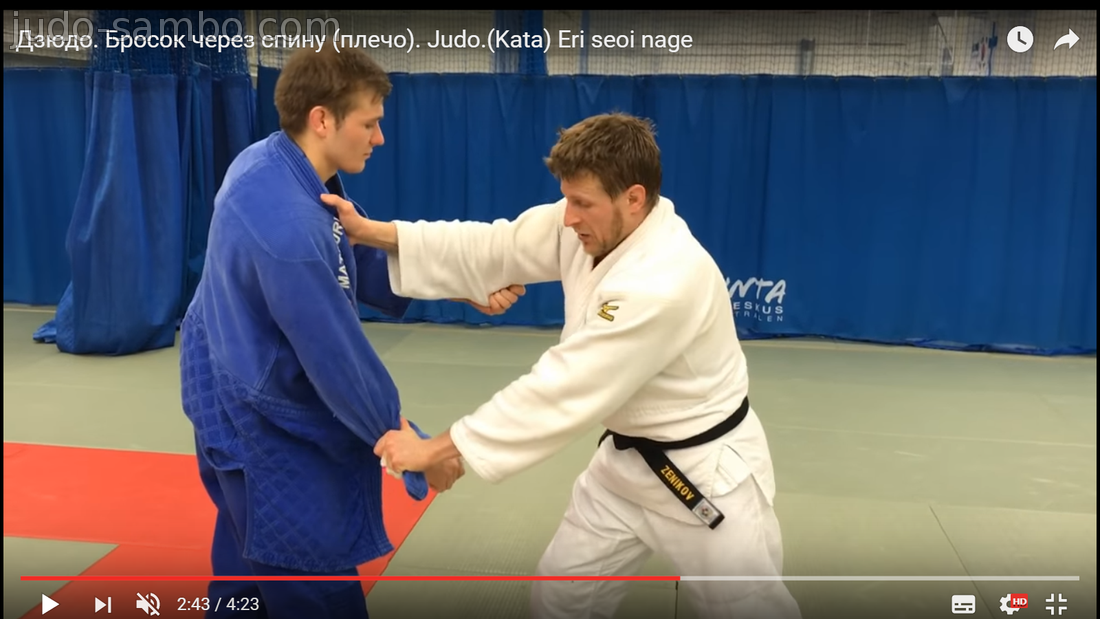Interesting analysis.
Here's some more (again, graphic video):
Gruesome Knee Injury Caused By Jumping Guard In A BJJ Tournament
So you think someone could easily avoid this type of break if they've never trained how to counter it? Keep in mind, there's only three ways this can go: Into a Bjj exponent's guard, you somehow catching the Bjjer and being able to slam them, or if you're standing wrong when its pulled your leg snaps in multiple places.
I couldn't tell what happened in the first one because the guy walked in the way. Not sure if his foot was planted wrong or if it turned that way because of the break. The only thing I know for sure is that I rather be punched in the face lol.
Second Video and Third Video looks the same.
It appears that instead of sitting into the stance they are trying to escape. The third video shows the foot slipping which is similar to what happened in the second video, which gives me the impression that they are trying to pull away vs willingly receiving the technique by moving into it. Not sure if I'm explaining it clearly, but in my experience, there are some techniques that are better to go with the flow than trying to escape it. Sometimes it's the attempt to immediately escape that gets the person into trouble. Like everything else, escape requires good timing and the best time to escape is not always at the beginning of a technique. Sometimes you have to just brace for that "storm" and accept that you have been caught off guard, then try to escape after the initial impact if things slow down from there.
So you think someone could easily avoid this type of break if they've never trained how to counter it?
Definitely YES. Avoiding the break would be easier than escaping because the breaking risk is a structure issue and not a skilled issue. Structure is basic 101 and it's the thing that people learn on day one of training. The problem is that most people forget those day one basics, or don't train those day one basics.
Unfortunately beginner basics skills are often ignored after a person reaches more advanced skilled levels. This is true in a lot of sports. Where professionals screw up on the most basic fundamentals of their sport. For me basics are just as important as the advanced stuff. I guess I'm different because much of what I like to do is to break the structure of my opponent, and much of that is just basic beginner stuff, with advanced understanding of "why we stand a certain way." If my leg is broken then I have no chance.
Keep in mind that I'm the instructor that used to tell students and potential students to kick me directly in the knee head on, to demonstrate the value of a bent knee and how important stances are. As a matter of fact. I've actually avoided a knee break when training with a teenage student during sparring. I was training a female student and explaining structure. I attacked the structure of her stance and she fell down. Because her ego was hurt, she started kicking at my legs and one of her kicks landed on my knee. The only thing that prevented her from breaking my leg was my solid stance. I scolded her and told her that her actions weren't acceptable and gave her a big lecture about how it's her responsibility to keep her training partner's safety in mind. Had she done the same action to another student, then their leg would have been broken.
Keep in mind, there's only three ways this can go: Into a Bjj exponent's guard, you somehow catching the Bjjer and being able to slam them, or if you're standing wrong when its pulled your leg snaps in multiple places.
My brain doesn't work like this. For example:
"Somehow catching the BJJer and being able to slam them." This isn't my first thought. My first thought is to secure my stance. I can't do anything with a weak stance including slam them. So my first thought is to secure my stance. If I'm unable to secure my stance or if it's going to be too much work to fight for, then my second thought is to give up my stance and go with the flow.
Example of going with the flow can be seen at 0: 27 play it in slow motion. You can see my opponent is in a bad position, when his legs almost goes straight, instead of fighting it he bends his knees and goes with it. At 0:38. Here I go with the flow, but my opponent also goes with the flow. I go with the flow by giving up on trying to regain my stance. I make my opponent carry my entire weight. My opponent goes with the flow as he can no longer safely support my weight. I lift his leg when I role to in an attempt to avoid any type of mount. Not that he would have done that, but it's how I train. I try not to leave stuff out just because I think someone isn't going to do it.
Both situations that I pointed out were my first time doing those techniques and I had no previous training to do those specific techniques. The only thing I had was an understanding of the body mechanics, for rolling someone and for weakening a takedown.
if you're standing wrong when its pulled your leg snaps in multiple places.
This is why I stated that my first thought is to secure my stance. This actually happens before someone jumps the guard. It's an on going effort to always be in a good stance.
This video looks like what some of the others were trying to do and you can see the danger that it puts the knee in.

